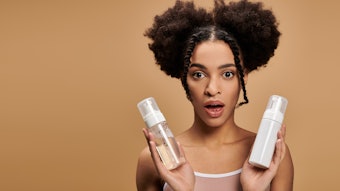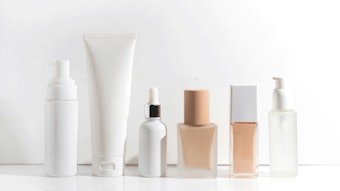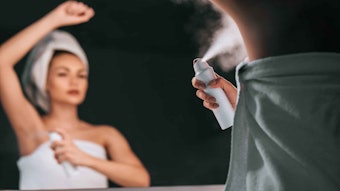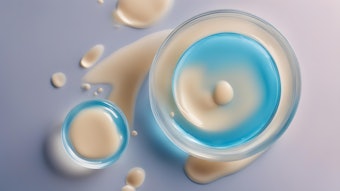
To read this article in its entirety, click through to your April 2020 digital magazine. . .
The International Organization for Standardization (ISO) is the world’s largest developer of voluntary international standards. This non-governmental international organization was founded in 1947. Today, ISO has members from 164 countries and nearly 160 individuals work full time for the Central Secretariat in Geneva, Switzerland. Through its members, the group brings together experts to share knowledge and develop voluntary, consensus-based, market-relevant international standards that support innovation and provide solutions to global challenges. It is important to note that ISO does not carry out certification of conformity to its standards.
ISO has published more than 23,000 international standards and related documents covering almost every industry, from technology and food safety, to agriculture and health care. ISO Working Group 7 (WG7), "Sun Protection Test Methods," was established in 2006, but the latest improvements were launched in 2016 through a systematic review of in vivo SPF, followed in 2017 by the in vivo and in vitro UVA methods. At the same time (2016), the validation process of in vivo water resistance began. During the ISO meeting at the end of 2018, two new alternative SPF methods—hybrid diffuse reflectance spectroscopy (HDRS) and the SPF in vitro double approach—were approved as new work items. At the end of 2019, when this paper was written, seven methods were undergoing standardization processes and three of them were close to the publication.
The present paper describes the ISO stages for the review and validation of standards. It also gives an overview of current and pending methods pertinent to sunscreen testing.
ISO Structure and Function
As stated, the ISO organization consists of a network of national standards bodies, the most representative of standardization in each country, from all regions of the world, working in partnership with international organizations. In 1951, the group published its first standard/recommendation, ISO/R 1:1951, “Standard reference temperature for industrial length measurements.” Since then, this standard has been updated numerous times and has now become, “ISO 1:2002 Geometrical Product Specifications (GPS)—Standard reference temperature for geometrical product specification.”
Within ISO, experts form a technical committee that is responsible for a specific subject area. For example, in 1998, ISO Technical Committee (TC) 217, “Cosmetics,” was created by Iran, which still holds the secretariat. Today, this TC includes 41 participating countries and 28 observing countries, subdivided into four working groups (WG) (see Figures 1 and 2):
WG1: Microbiological standards and limits
WG3: Analytical methods
WG4: Terminology
WG7: Sun protection test methods
At the European level, a similar structure is in place (see Figure 2) although the “WG” terminology is not present.
7 Steps to ISO Validation
There are seven main stages of development for the ISO validation process:
- Pre-work Item (PWI)
- New Work Item Proposal (NWIP)
- Working Draft (WD) or preparatory stage
- Committee Draft (CD)
- Draft Internal Standard (DIS)
- Final Draft International Standard (FDIS)
- Publicationd
Two of these are optional—i.e., the PWI and CD stages. Technical and editorial comments can be made throughout and up until the FDIS stage in order to improve the document. At the FDIS stage, only editorial comments are allowed. The publication of a norm typically takes three years but can be extended to four.
WG 7: Sun Protection Test Methods
As stated, within ISO, WG7 “Sun Protection Test Methods” was set up in 2006 and since then, much standardization work has been accomplished.
SPF In vivo, ISO 24444: In 2010, the first ISO norm, “SPF In vivo” (ISO 24444), was published by WG7. This norm is accepted today as a gold standard around the world (except in the United States) to claim SPF. It recently underwent a systematic review process to improve the method and reduce the inter-lab variability of results. Therefore, if you repeat the test with the updated version, the mean value will not change. The main updates concern the application techniques, addition of new standards with higher SPF values, control of the lamp beam uniformity, and better precision of the rejected cases. The method was finalized and published in February 2020. For more on these changes, see Page 43.
UVA In vivo, ISO 24442: One year later, in 2011, ISO published the “UVA In vivo” method ISO 24442. Similar to the ISO 244444, this method is currently under a systematic review process in order to improve the method and reduce the inter-lab variability of results. This method being technically close to the SPF In vivo, the improvements are similar and will be harmonized with the ISO 24444. This method should be published at the end of 2021.
UVA In vitro, ISO 2443: The last method under systematic review is the “UVA In vitro” method ISO 24443. This method was published in 2012 will be optimized thanks to different modifications, such as the addition of a high UVA protection factor standard value; a more precise application protocol; the possibility to used sandblasted plates as substrates, etc. Currently in the CD stage, ISO 24443 is targeted for revision and publication by the end of 2020.
Water Resistance
Even if globally the cosmetic industry used the water resistance claim, no ISO method yet exists for it. In 2015, WG7 launched a new work item, ISO 16217, for a water immersion procedure. This new method is, in fact, somewhat of a mix between the existing U.S. Food and Drug Administration (FDA) and Colipa methods. Many improvements and harmonization with the In vivo SPF ISO 24444 are scheduled for ISO 16217. As of press, it is currently in the FDIS stage and its target date for publication is the beginning of 2020.








!['[Sunscreen] developers will be able to innovate more efficiently while maintaining high standards of quality and safety for consumers.'](https://img.cosmeticsandtoiletries.com/files/base/allured/all/image/2024/06/woman_outside_using_sunscreen_on_face_ISO_test_standards_AdobeStock_783608310.66678a92029d9.png?auto=format%2Ccompress&fit=crop&h=191&q=70&rect=62%2C0%2C2135%2C1200&w=340)


